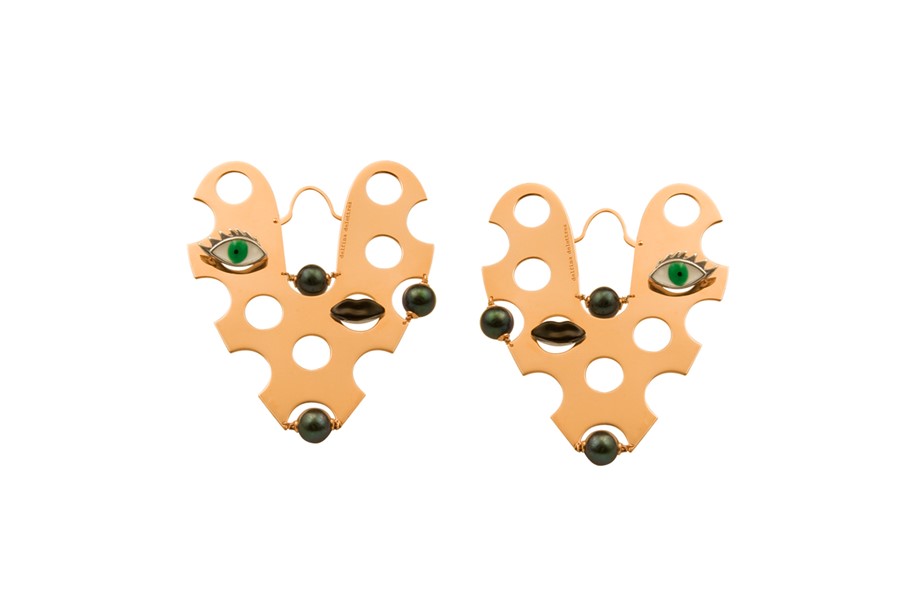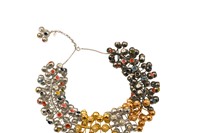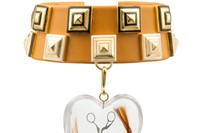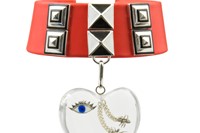From the realisation of her first piece of jewellery - a skull necklace fashioned from silver and bone - it was clear that Delifina Delettrez is a designer with an entirely unique aesthetic.
From the realisation of her first piece of jewellery – a skull necklace fashioned from silver and bone – it was clear that Delfina Delettrez was a designer with an entirely unique aesthetic. A member of the Fendi clan, those scions of classic Italian sophistication and high voltage glamour, Delfina has forged her own path with a gothic design vocabulary that incorporates eyeballs, fingers, lips and insects, rendered in precious and semi-precious stones, enamel, resin, leather and glass. Presenting her spring/summer collection during Paris Fashion Week, Delettrez transformed a light airy studio in the Seventh arrondissement into a cavern of macabre delights, with pieces displayed on a series of outrageous wigs. Evil-eye pendents dangled from fingers woven in platinum blonde, bumble-bee hair pins glinted among hennaed curls, a pair of gold scissors hovered, encased in resin, above a lock of hair cut from Delfina's daughter's head. It was a deliberately unsettling show – looking closely at each piece caused a flinch of consternation, from the recurring use of real hair, to the miniature drops of blood that hung from golden arrows aimed at a glass heart.
Black humour is clearly a motivating force behind the vast array of ideas that inform the collection, such as the very Victorian notion of enclosing locks of hair as keepsakes and the voodoo motif of the evil-eye. Asked to define her inspirations, the designer cited "Marie Antoinette, a mix of goddesses and Tim Burton's Queen of Hearts, with a kind of Dracula effect." She also emphasised the importance of kineticism, an element which clearly shines through, as the interplay of gemstones, glass and light animated the pieces, giving them life and energy amid the vibrant theatricality of their settings.
Text by Tish Wrigley



